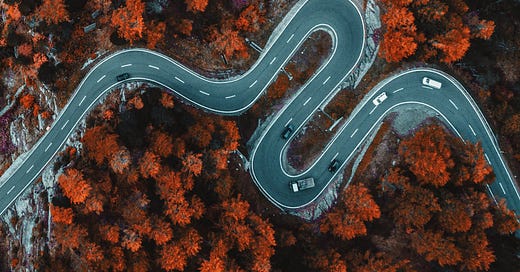A friend of mine can sit down and write an essay from start to finish in one sitting. It’ll need some editing, but the ideas are there, the voice is strong, and the argument is mostly formed. I hate her.
Another friend of mine writes poetry. He calls them blogs, but they’re poems. Each day he shares his poems with the world and they circulate around the globe creating tiny ideas viruses that affect the culture around them. I hate him too.
Ok, I don’t hate them, I’m jealous of them. In my experience, there is no “linear” version of creating where the work comes out whole. Where the novel is born in one fell swoop, the song comes out complete from start to finish, and the dance arrives choreographed and finished.
Lin Manuel said it best when he told reporters that moments like these are once in a lifetime, twice if you’re lucky. The rest is sheer hard work. Isabelle Allende, Margaret Atwood, Elizabeth Gilbert, Julia Cameron, Neil Gaiman, Maya Angelou, Hemmingway, and other prolific writers share this perspective; that “the good stuff” is a labor of, well, labor.
Each of us has a different process for getting our ideas out of our heads and into the world. My guess is for most of us that process doesn’t look like the direct download version my friends enjoy, but instead looks like a windy confusing path with dead ends and sharp turns and an endpoint we can never quite see in advance.
I once heard Cheryl Strayed interviewing a novelist who shared that she would spend days going down extraneous rabbit holes before finding her point. She claimed (and I agree) that non-linear exploration is part of the creative process, not a digression.
We live in a world that rewards what is linear and visible. We like clean-cut and neatly tied bows. We value high output, optimized results, and efficiency. Creating is rarely marked by any of these characteristics. It’s messy and can’t be boxed in. It can’t be rushed, templatized, or measured. Creating has its own timeline and progression, one that is often divorced from the outcomes we seek. Despite our trying, we can’t control it.
Creativity can be felt. It can be followed. It can be listened to. And, best of all, it can be fun.
The reason, I think, people who appear to have linear creative output can produce the way they do is because they feel, follow, listen, and have fun. They create from a place that’s true and real and they don’t view the digressions and inevitable left turns as irrelevant or frustrating. Instead, they’re integral to the creative process.
Felt. Followed. And fun. What if we gave that a whirl?
Finish your dream project - together with others
Brainstorm Road is a creative community for everyday people with dream projects. We have kids, day jobs, and adult responsibilities. We also have dreams. Brainstorm Road is where we work on them.
We’re accepting new members in January.
Join our Substack community
Daily prompts, weekly high fives, monthly meet-ups. Meet people who will encourage your creative pursuits and celebrate your progress. Upgrade to a paid Brainstorm Road subscription today.
As always, thanks for reading and thanks for being here.
M+K







You know I’m nodding my head profusely to this that it may fall off my shoulders.
A book recommendation: Mason Currey’s Daily Rituals: Women at Work. Follows the processes of many women, not just in creativity but multiple fields. The weird and whacky included, but it makes sense for them ❤️🙌🏼
👏🏻👏🏻👏🏻 I want to stand up and cheer this post! Shout it from the rooftops. "Cannot be templatized." There's so much attention placed on content creation these days, and less on creativity and the creative journey. Love love love this post, M + K!